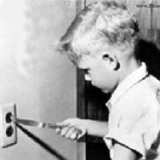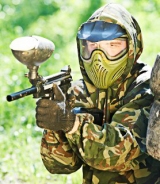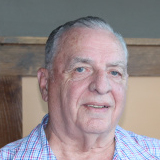- Forum
- General Discussion | Introductions | Off Topic Forum
- Photography General Discussion
- Camera microphones for bird sounds ?
Camera microphones for bird sounds ?
Post #758028
How would you set up to capture the audio?
My Camera Bag:
Canon 7D | 50mm f/1.2 | 17-40mm f/4 | 70-200mm f/2.8 | 320EX | 580EXII
-

- TCav
- The Lounger
-
- Nikon D7200. Sony A77 II. Pentax KP.
- Followers: 85
- Posts: 1020
-
Points:
30742
Post #758082
-

- Farestad
- Snapobsessed
-
- Canon 1D Mark II
- Followers: 92
- Posts: 376
-
Points:
2543
-

- Miss Polly
- Snapobsessed
- Followers: 133
- Posts: 431
-
Points:
5358
Post #758200
Farestad wrote: Interesting, so would that sound shark thing compare to a quality shotgun mic?
It allows better targeted capture of sound
-

- Randy Shaw
- The Lounger
-
- Nikon D600 and Sony A7
- Followers: 210
- Posts: 1213
-
Points:
8708
Post #758230
-

- Ira Weber
- Photography Hooked
-
- Nikon D850
- Followers: 119
- Posts: 658
-
Points:
6656
-

- CharleyL
- Photography Hooked
-
- Canon 90D, (2) Canon 77D, Fuji HS20 EXR, Still have my Sony MVC-FD95
- Followers: 72
- Posts: 915
-
Points:
35043
Post #758354
If you are a DIY type like me, you might consider making a parabolic mic out of an old small satellite dish or saucer type snow sled, mounting the mic in the same position as the removed satellite receiver electronics or just a way to allow adjustment. Add a bracket with a 1/4-20 threaded hole to allow attaching to your tripod and then go out with a small amplifier and headphones to test it, or your camera if you don't have an amplifier, but working this way without headphones is going to be difficult if the camera does not have a headphone jack. A bracket support for the mic to allow differences in distance of the sensitive portion of the mic from the center of the dish will allow tuning it for optimum results. Get it right, and it will be a great addition to your bird video gear.
I made one of these microphones from a dish snow sled 60 years ago, and it worked surprisingly well for what it was. Smaller would be more desirable and more portable for bird video work, but just keep in mind that the smaller diameter also reduces it's effectiveness.
A reply, telling us about your achievements would be great too. It might get others here interested.
Charley
-

- Thomas S
- Snapobsessed
-
- Nikon D850
- Followers: 104
- Posts: 270
-
Points:
3179
Post #758426
CharleyL wrote: Yes, parabolic microphones do work and work well for capturing distant sounds, but they require aiming, like is necessary for your camera because they focus the sound in a narrow path like a spot light does, and eliminate other sounds from the surroundings better than performed by a shotgun type mic. I good one with a quality microphone, mounted to a second tripod near your camera, and aimed at the sound source should do what you want well. Keep in mind that the dish size and shape construction determines the quality of the collected sound as well. If a good shotgun type mic isn't good enough for your need, a good parabolic mic should be considered as your next step.
If you are a DIY type like me, you might consider making a parabolic mic out of an old small satellite dish or saucer type snow sled, mounting the mic in the same position as the removed satellite receiver electronics or just a way to allow adjustment. Add a bracket with a 1/4-20 threaded hole to allow attaching to your tripod and then go out with a small amplifier and headphones to test it, or your camera if you don't have an amplifier, but working this way without headphones is going to be difficult if the camera does not have a headphone jack. A bracket support for the mic to allow differences in distance of the sensitive portion of the mic from the center of the dish will allow tuning it for optimum results. Get it right, and it will be a great addition to your bird video gear.
I made one of these microphones from a dish snow sled 60 years ago, and it worked surprisingly well for what it was. Smaller would be more desirable and more portable for bird video work, but just keep in mind that the smaller diameter also reduces it's effectiveness.
A reply, telling us about your achievements would be great too. It might get others here interested.
Charley
Very good post. But my comment is aimed at you made one from a dish snow sled?! I bet you were picking up radio signals from Mars!
-

- CharleyL
- Photography Hooked
-
- Canon 90D, (2) Canon 77D, Fuji HS20 EXR, Still have my Sony MVC-FD95
- Followers: 72
- Posts: 915
-
Points:
35043
Post #758429
In the early 1960's parabolic shapes weren't very available, at least not for DIY on a tight budget. Saucer sleds were available and even at a reasonable price if you had to buy one for a DIY project. Mine came from a friend who had had enough of going down the hills backwards and was going back to using his sled.
The small Satellite dishes from Dish Network are being thrown away as trash now, when people get tired of lost signal during rain and snow storms, probably dust storms too, so a likely choice for the needed focusing parabolic reflector at a very reasonable price - FREE.
Charley
-

- CharleyL
- Photography Hooked
-
- Canon 90D, (2) Canon 77D, Fuji HS20 EXR, Still have my Sony MVC-FD95
- Followers: 72
- Posts: 915
-
Points:
35043
Post #758432
With an audio microphone as the collector and a plastic parabolic dish there is absolutely no chance of picking up radio signals from Mars or anywhere else. This is an audio concentrator that focuses faint audio sounds by reflecting them to the focus point where the microphone can pick them up. The larger the parabolic dish, the more of the sound that can be collected, then amplified by the electronics that the microphone is plugged into. No radio signals involved in this at all. So, bigger is better, up to the point that it is difficult to transport, and way too attention getting when the public sees it. I haven't built one using a Satellite TV dish, but believe that one of that size would be much more portable and less attention getting, without sacrificing so much in pick up capability that it would be worthless. For audio and video work, you aren't likely interested in audio from a block away, 20-30 foot away maybe. I could hear conversations clearly from about a block away with the saucer sled, unless a car or truck going by blocked it, but it still took a good amplifier and headphones to amplify it enough to understand what they were saying. This was just a science experiment and I never listened to whole conversations from that far away. I actually had no real use for it at the time.
Now, with video cameras I think a smaller parabolic mic might be of some help sometimes, but just using a Rode Shotgun mic on top of my video camera with only the camera audio amplifier has captured "those important words" at a wedding ceremony with the camera and mic on a high tripod behind the attendees, so about 100' from the bride, groom and preacher, and outdoors in front of a horse barn. With that kind of capability, is there a real need for a parabolic microphone today?
Charley
-

- Norse Photographer
- Has the Hang of it
- Followers: 44
- Posts: 78
-
Points:
1574
Post #758529
-

- CharleyL
- Photography Hooked
-
- Canon 90D, (2) Canon 77D, Fuji HS20 EXR, Still have my Sony MVC-FD95
- Followers: 72
- Posts: 915
-
Points:
35043
Post #758535
Charley
- Forum
- General Discussion | Introductions | Off Topic Forum
- Photography General Discussion
- Camera microphones for bird sounds ?
Latest Reviews
The Canon EOS R100 is an entry-level mirrorless camera introduced in 2023. But just because it’s an entry-level camera doesn’t mean it’s a bare-bones camera. Find out why in this review!
Nikon’s retro-looking Nikon Zfc is anything but retro. Under its classic body is a host of features and amenities that make it a worthwhile compact mirrorless camera for 2024.
The Canon EOS R50 is one of the newest R-system cameras from Canon. Is it worth your money? Find out all the details you need to know in this comprehensive review.
The Sony FE 70-200mm f/2.8 GM OSS II is Sony’s flagship mirrorless zoom lens. As such, it’s loaded with features and has a top-shelf build quality that makes it a top pick!
Latest Articles
Using leading lines in photography helps improve the composition by drawing viewers in and leading their eye from the foreground to the background. Explore some fine examples of this in this guide!
The Insta360 has one of the best lineups of action cams and 360-degree cameras. With these Insta360 accessories, you can elevate your photography and videography game!
Creating impactful photos of landscapes depends on many factors, not the least of which is your talent behind the lens. This guide explores other elements required for the best product.
The Canon EOS R100 is an entry-level mirrorless camera introduced in 2023. But just because it’s an entry-level camera doesn’t mean it’s a bare-bones camera. Find out why in this review!
Are you ready to upgrade your camera? Before buying new, you might consider the value of purchasing used gear to save money.
The Olympus OM-D E-M10 Mark IV is a micro four thirds camera released in 2020. It’s an entry-level system along with the OM-D E-M5 Mark III. Use this guide to determine which one is best for you!
Blue hour photography might not be as well known as golden hour photography, but it is every bit as good a time to create epic images of landscapes. Learn how in this quick tutorial!
Nikon’s retro-looking Nikon Zfc is anything but retro. Under its classic body is a host of features and amenities that make it a worthwhile compact mirrorless camera for 2024.



















